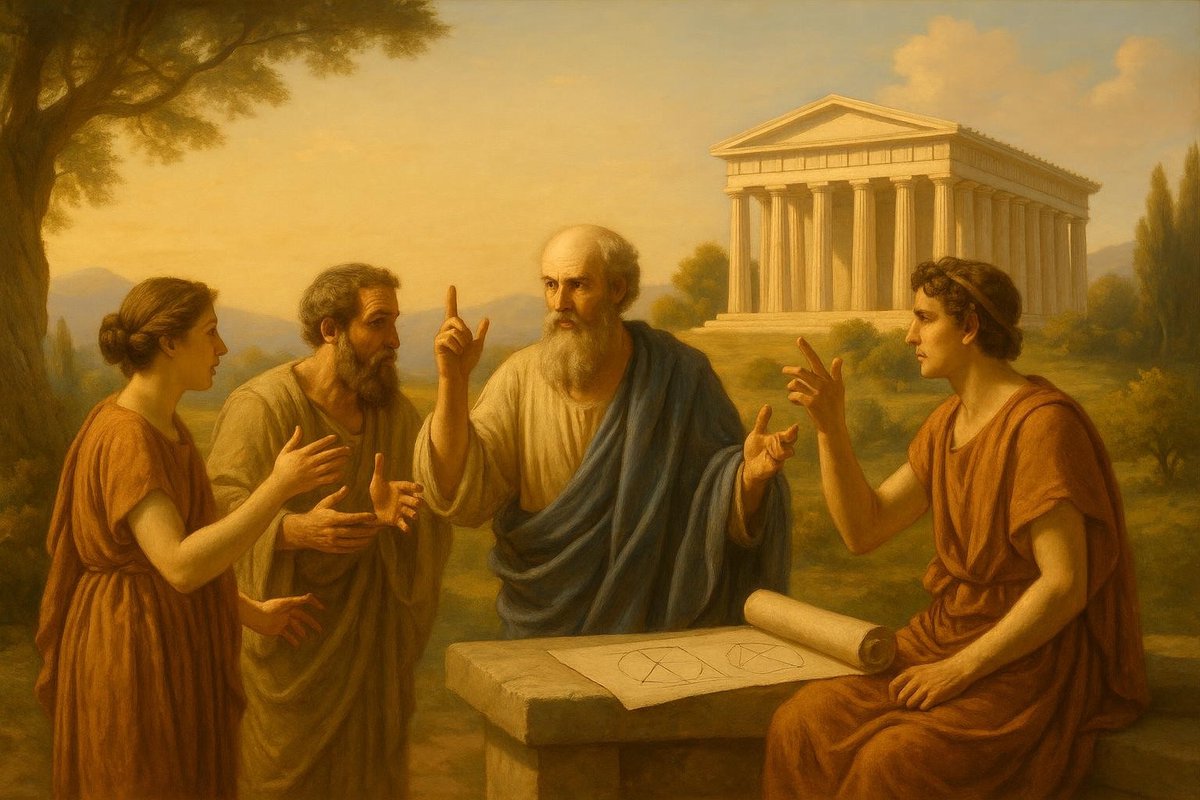
The Golden Ratio: Nature’s Perfect Proportion
Have you ever wondered why certain things appear aesthetically pleasing? From the spiral of a seashell to the architecture of the Parthenon, many believe these designs hold a secret known as the Golden Ratio. A mathematical harmony, the Golden Ratio has fascinated thinkers for centuries, inspiring artists and scientists alike. But what sparked this obsession with proportion?
Hypothesis & Context: Ancient Puzzles and Philosophical Curiosity
Long before the term ‘Golden Ratio’ existed, ancient Greek mathematicians were engrossed in the mysteries of proportion. It was a time when numbers were not just for counting but for understanding the universe itself.
- Phidias, a renowned sculptor, is said to have used this divine proportion in his works, giving birth to the idea that certain mathematical ratios were inherently beautiful.
- Euclid, in his seminal work ‘Elements’ around 300 BC, provided the first known written definition of the ratio, describing a line divided into two segments where the whole is to the longer segment as the longer is to the shorter.
Interestingly, this mathematical curiosity found its roots in the Greeks’ philosophical pursuits, where balance and harmony were seen as virtues. In a world where chaos and order were in constant dance, the Golden Ratio offered intellectual comfort.
Setup & Method: From Geometry to Universal Application
How did a simple ratio leap from ancient geometry to the broader realms of art and nature? The journey was neither linear nor immediate. The use of the Golden Ratio in art and architecture evolved over centuries, embraced by those who sensed its aesthetic power.
- The Fibonacci sequence, developed by the Italian mathematician Leonardo of Pisa in the 12th century, indirectly popularized the ratio. Each number in this sequence is the sum of the two preceding ones, and as the sequence progresses, the ratio between consecutive numbers approaches the Golden Ratio.
- Artists during the Renaissance, most notably Leonardo da Vinci, utilized this ratio to achieve balance in their compositions, believing it to be visually pleasing.
Of course, this wasn’t merely an artistic endeavor. The methodical application of the ratio in design was also a subconscious nod to the universe’s hidden order.
Results & Reactions: An Ongoing Mathematical Marvel
The Golden Ratio’s journey through history is a testament to its enduring allure. But why does it continue to captivate us?
- Whether it is in the pentagon of a starfish, the spiral of a galaxy, or the leaf arrangements of plants, this ratio appears again and again in nature, leading many to believe it is somehow intrinsic to the fabric of reality.
- Controversies and debates have arisen over the years, questioning whether these appearances are coincidental or deliberate manifestations of mathematical principles.
As time goes on, the Golden Ratio continues to inspire new generations of thinkers and creators, proving its timeless appeal. “It is just a number,” some argue. But is it?
Implications: The Timeless Appeal of the Golden Ratio
The implications of the Golden Ratio extend far beyond mere numbers on a page. What does its ubiquity tell us about the world we live in?
- For artists, it offers a bridge between mathematics and creativity, suggesting that beauty can be quantified.
- In science, it challenges us to see patterns and connections where we might not expect them, hinting at an underlying structure to the cosmos.
The Golden Ratio is more than a mathematical curiosity; it’s a reminder of the profound connections between different fields of human endeavor. It teaches us that beauty and logic are not opposites but intertwined aspects of the same reality.
Fuel Someone Else’s Curiosity
If this exploration of the Golden Ratio has intrigued you, share it with others. Dive into discussions and ignite curiosity in those around you. The journey of discovery is always richer when shared. Who knows? You might just inspire someone else’s mathematical adventure!

Leave a Reply